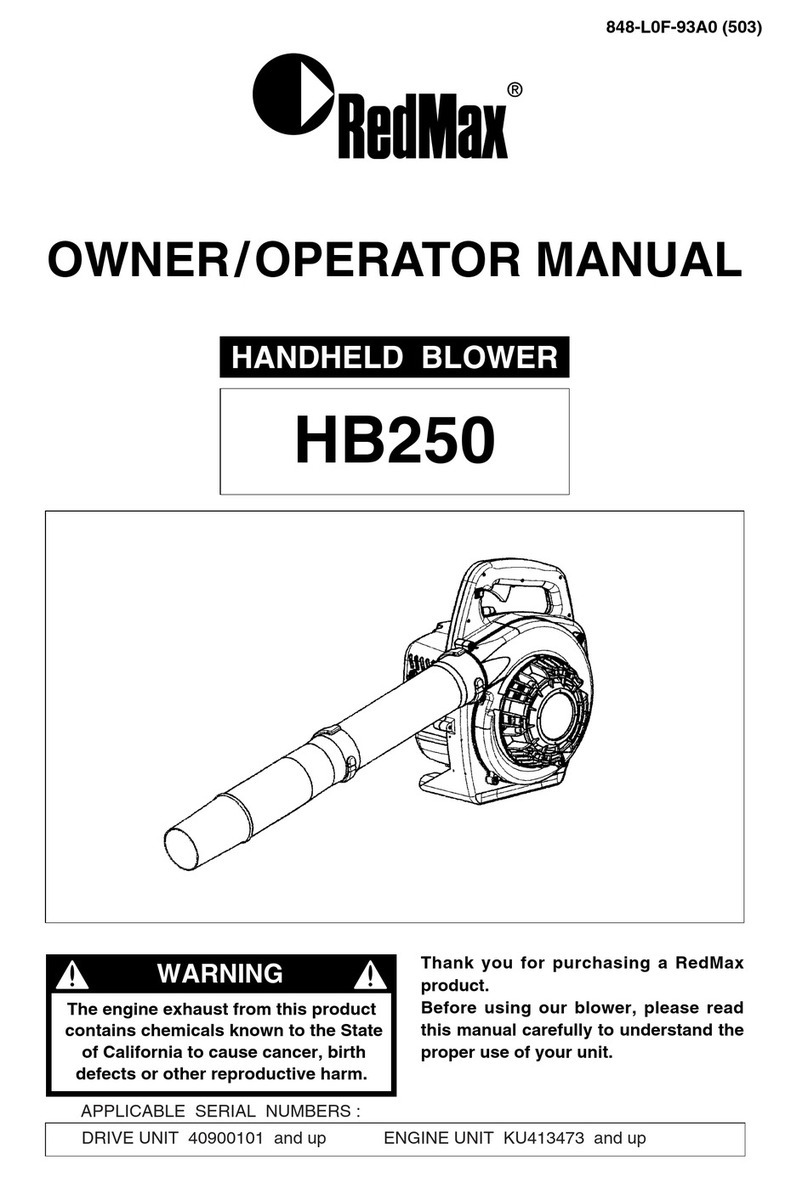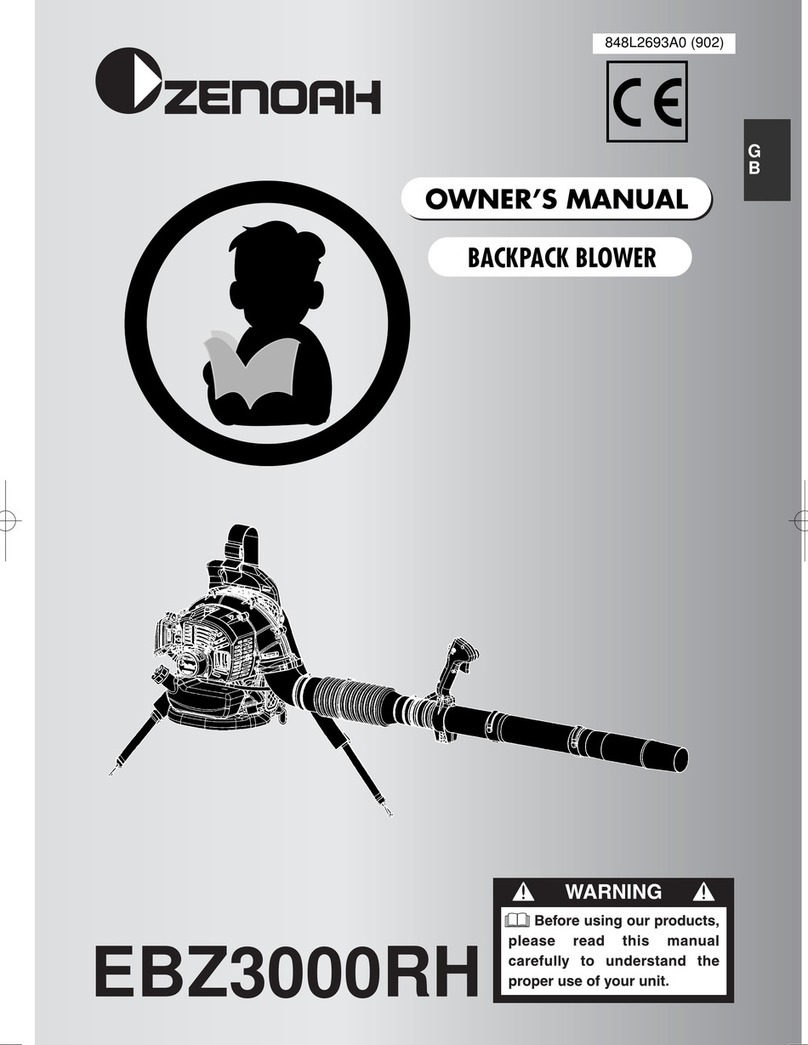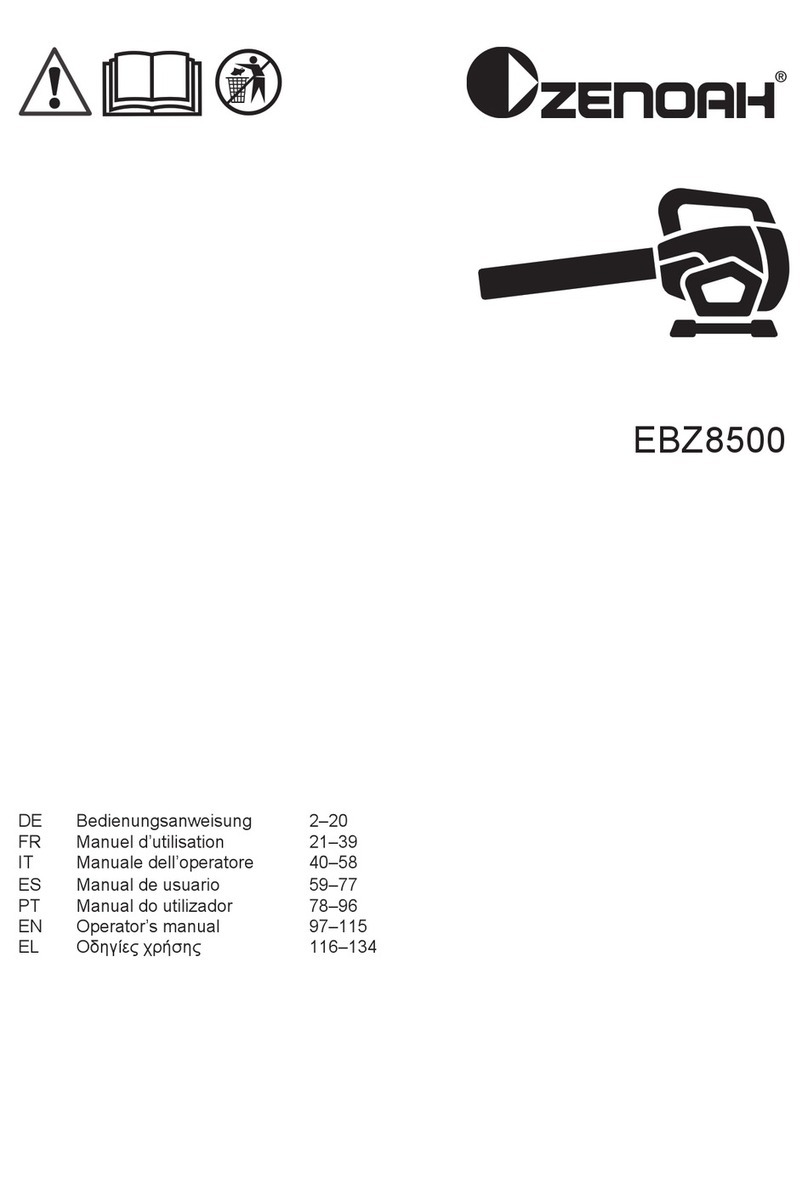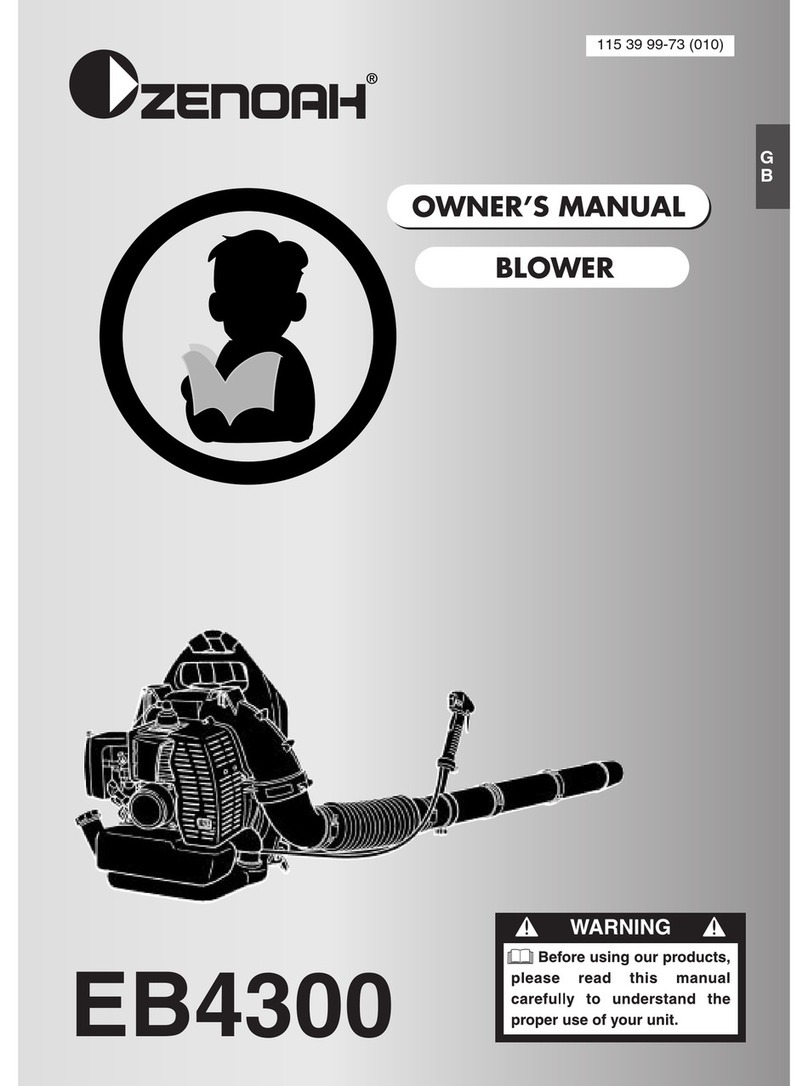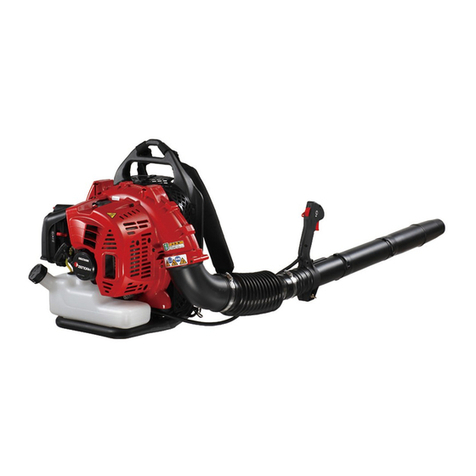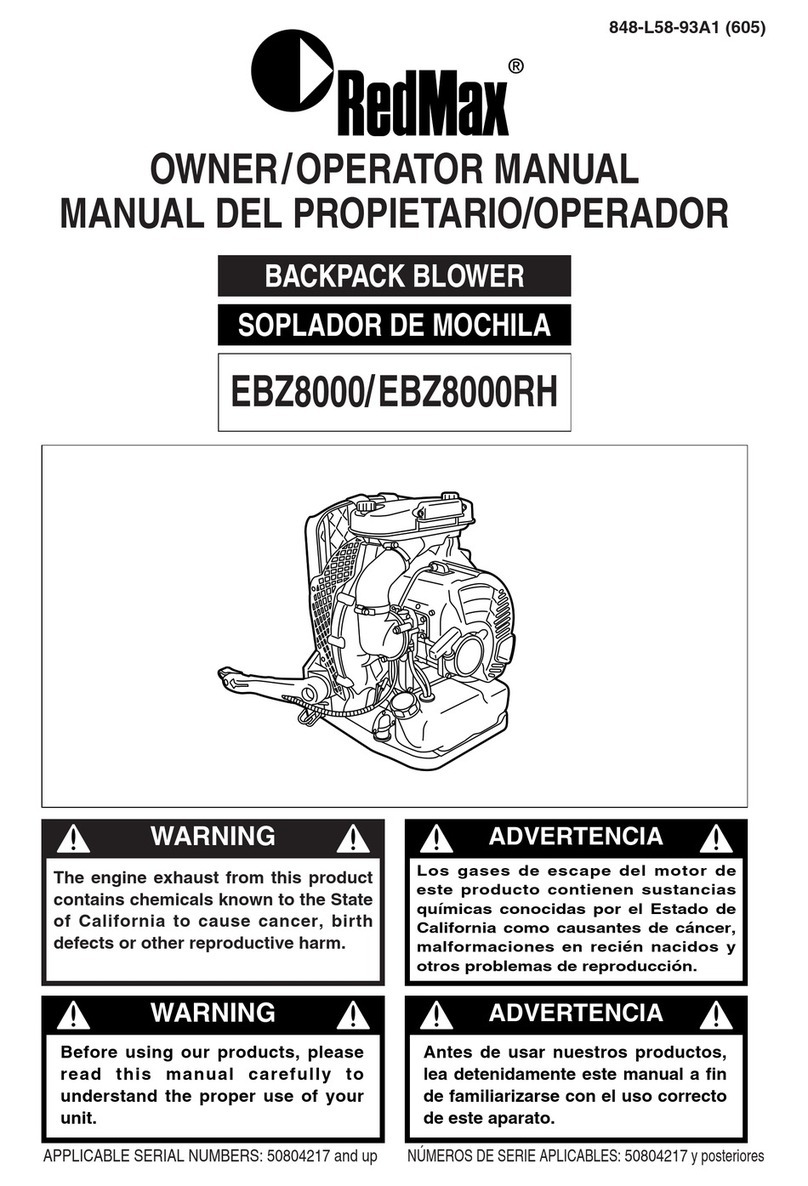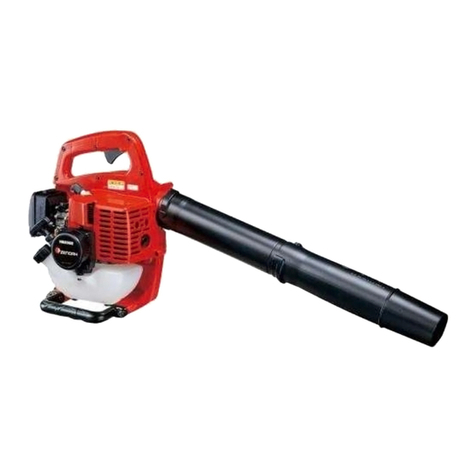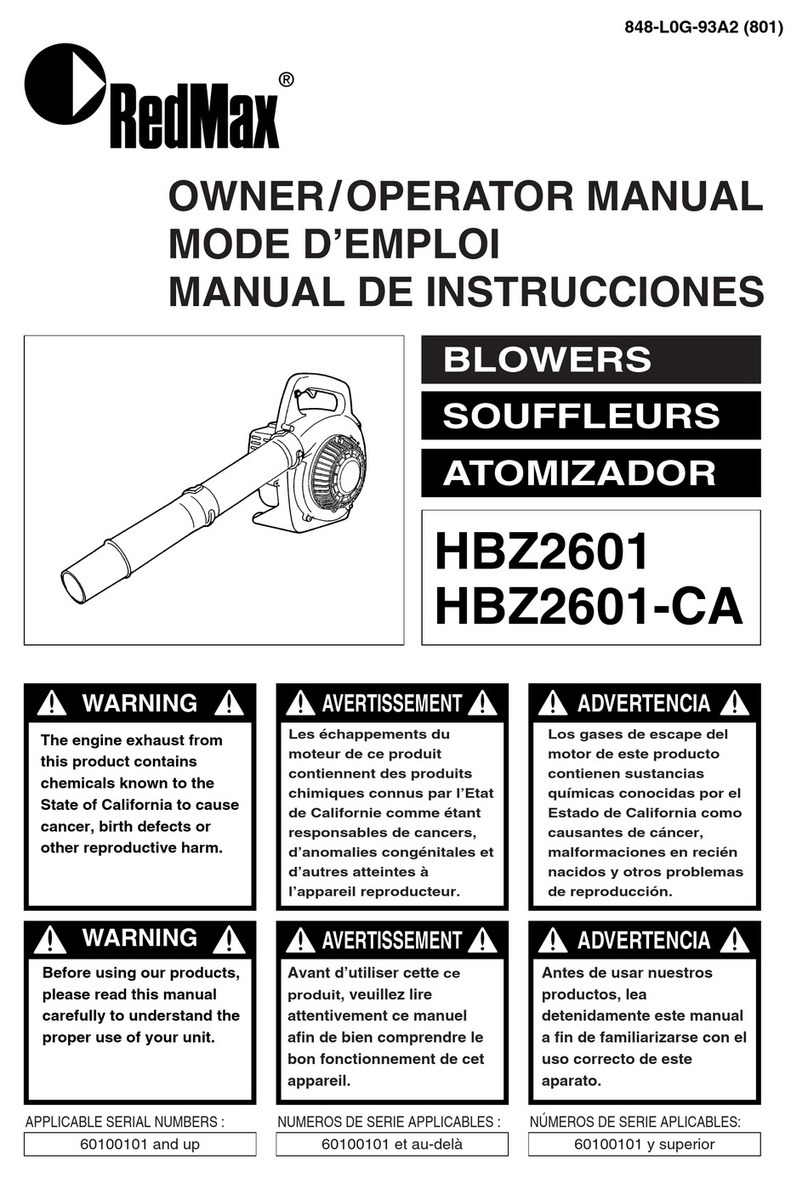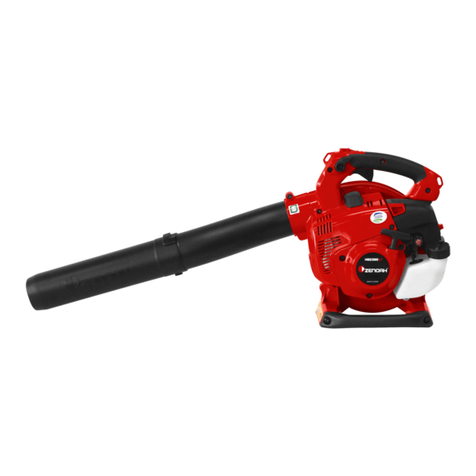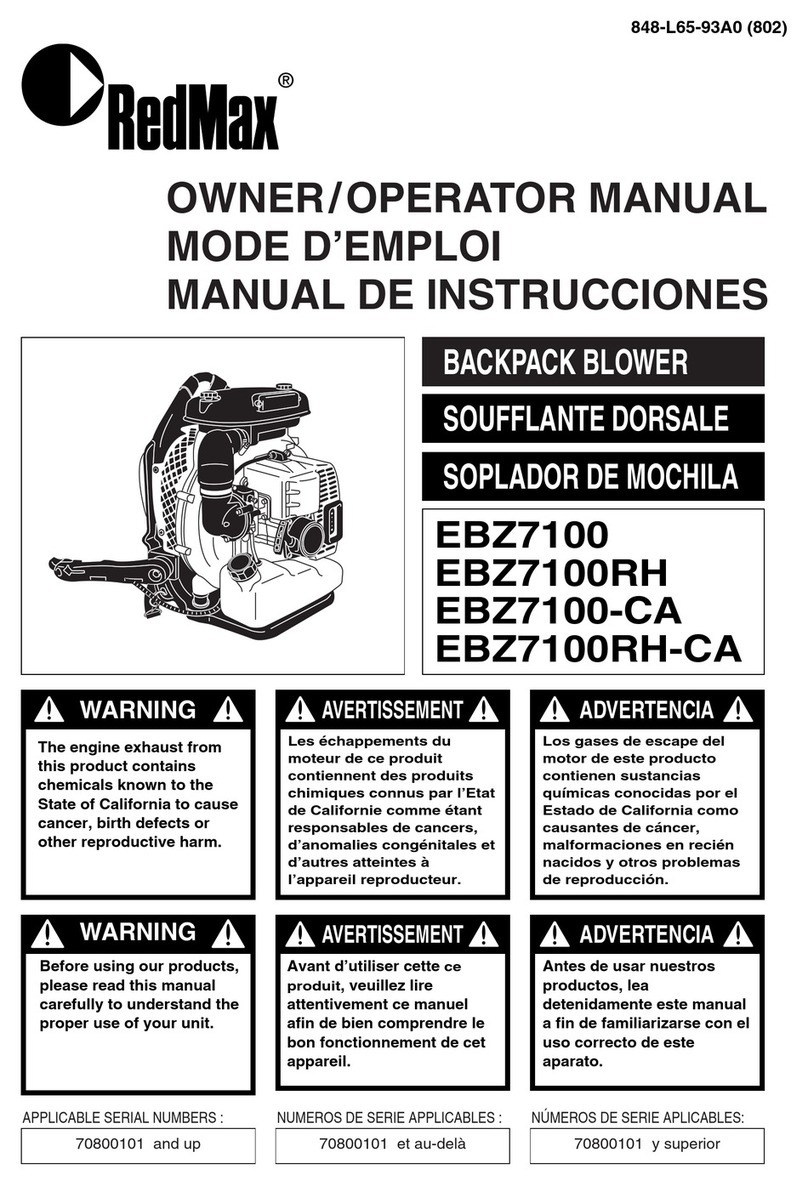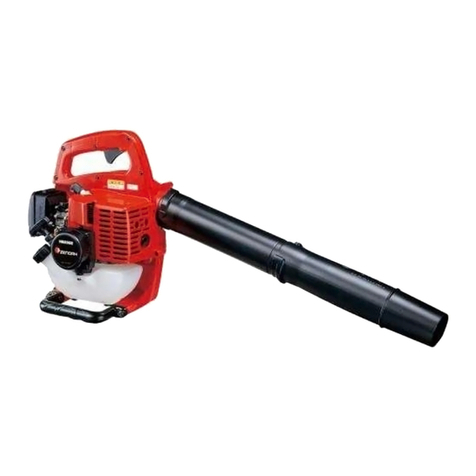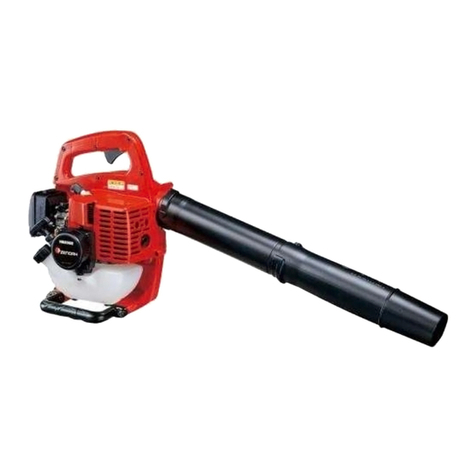GB-7
G
B
EBZ8001
f) Pay attention to the direction of
the wind, do not work against the
wind.
g) Never point a blower tube toward
an open flame to avoid the possi-
bility of igniting the unit, causing
injury to yourself or damage to
surroundings.
3. To minimize blowing time.
a) Use rakes and brooms to loosen
debris before blowing.
b) In dusty conditions, slightly
dampen surfaces or use mister
attachment when water is avail-
able.
c) Conserve water by using power
blowers instead of hoses for many
lawn and garden applications,
including areas such as gutters,
screens, patios, grills, porches
and gardens.
4. Never to touch the spark plug or
plug cord while the engine is in
operation. Doing so may result in
being subjected to an electrical
shock.
5. Never to touch the muffler, spark
plug, or other metallic parts of the
engine or engine cover while the
engine is in operation or immedi-
ately after shutting down the en-
gine. These metallic parts and en-
gine cover reach high tempera-
tures during operation and doing
so could result in serious burns.
6. After using blowers and other
equipment, CLEAN UP! Dispose
of debris in trash receptacles.
MAINTENANCE
1. In order to maintain your product
in proper working order, perform
the maintenance and checking
operations described in the
manual at regular intervals.
2. Always be sure to turn off the en-
gine and disconnect the spark
plug before performing any main-
tenance or checking procedures.
WARNING
The metallic parts and engine
cover reach high temperatures
immediately after stopping the
engine.
3. Examine the blower at intervals
for loose fasteners and rusted or
damaged parts. Use special
care around the fuel line, the
muffler, and the ignition wiring.
4. All engine service except for
those described in this manual
should be performed by compe-
tent service personnel. Improper
service to the blower fan and muf-
fler could cause a hazardous fail-
ure.
5. When replacing the any other
part, or any lubricant, always be
sure to use only ZENOAH prod-
ucts or products which have been
certified by ZENOAH for use with
the ZENOAH product.
6. In the event that any part must be
replaced or any maintenance or
repair work not described in this
manual must be performed,
please contact a representative
from the store nearest ZENOAH
authorized servicing dealer for
assistance.
7. Do not use any accessory or at-
tachment other than those bear-
ing the ZENOAH mark and rec-
ommended for the unit.
8. Under no circumstances should
you ever take apart the product
or alter it in any way. Doing so
might result in the product be-
coming damaged during opera-
tion or the product becoming un-
able to operate properly.
TRANSPORTATION
• Drain the fuel from the fuel tank
before transporting or storing the
blower.
• Secure the unit carefully to pre-
vent movement when it is trans-
ported.
•Aunit that receives a strong
shock during transport and un-
loading may malfunction.
STORAGE
• When storing the blower, choose
a space indoors free from mois-
ture and out of the reach of chil-
dren.
DISPOSAL
• When you dispose of the ma-
chine, do not disassemble the
machine .
• When disposing your machine,
fuel or oil for the machine, be sure
to allow your local regulations
5. For safe operation
